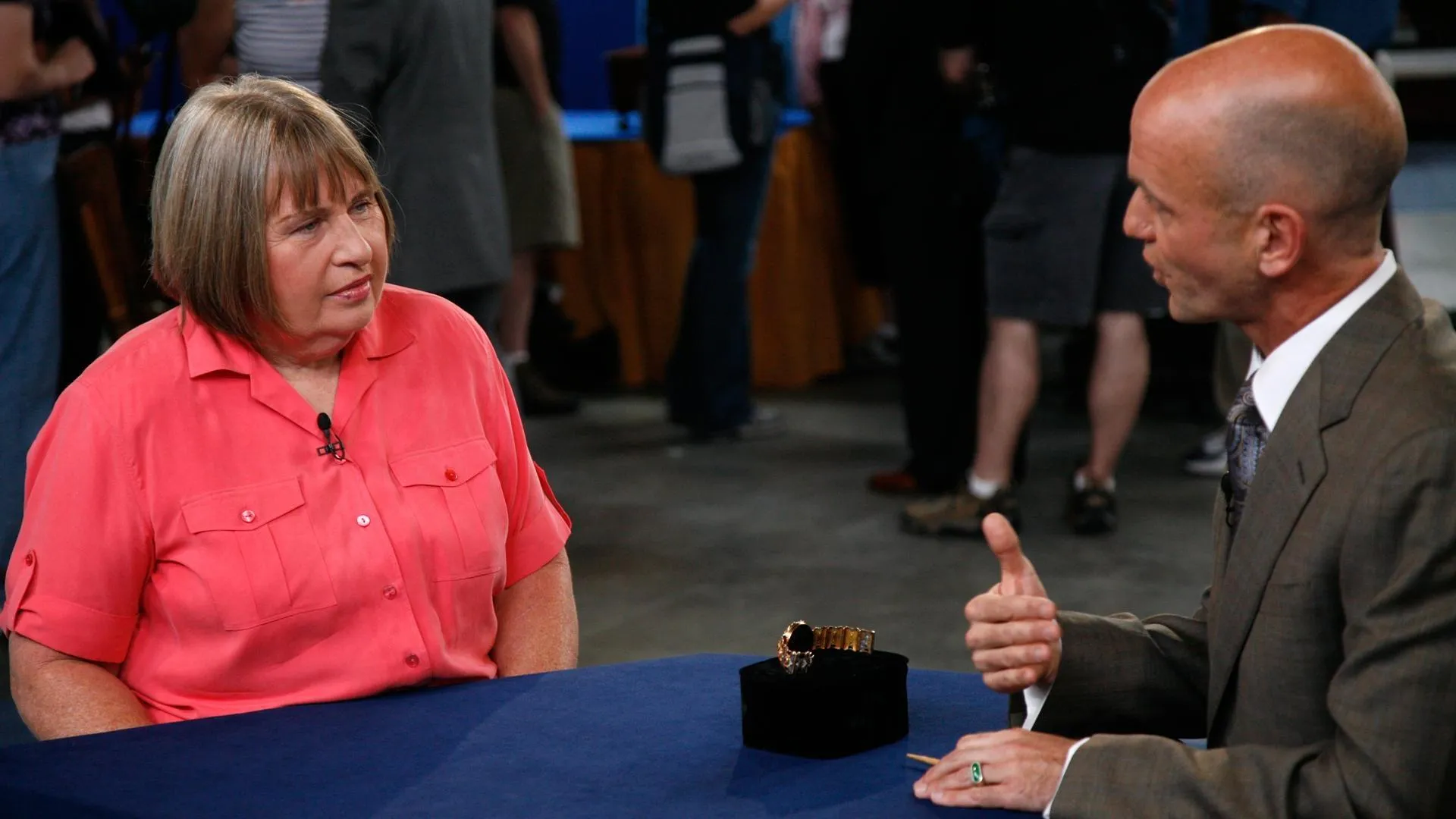GUEST: About 20 years ago, I was with a friend, and we just decided to go into an antique mall, and I saw this bracelet. And it didn't just speak to me, it shrieked to me.
APPRAISER: Uh-huh.
GUEST: All I had was pocket change. So I had to borrow the $64 for the bracelet from my friend. And when I got home, I was so excited, I decided I would take it to a local jewelry store and have him tell me if it was a really valuable piece. So I showed it to him, and he said, "Oh, those stones are fake, and this is made out of copper." And he gave it back to me, and I was all deflated.
APPRAISER: Mm-hmm.
GUEST: So then I decided to send a picture of it to the author of a book on antique jewelry that I had.
APPRAISER: Mm-hmm.
GUEST: And he sent me back a nice letter saying that he thought that the bracelet was from the early 1800s and that it might be Swiss. But he didn't give many more details than that unless I would come and show him in person.
APPRAISER: Well, the first part of the story, the gentleman who said that this was fake and copper, was, was incorrect.
GUEST: Oh, I'm so glad.
APPRAISER: Um... What you have here is a bracelet from about the 1820s. It is gold. It's also enamel. Now, the stones are what are called foil backs. And what that means is that the stones had colored foil put behind them so as to even the color out amongst the stones. Because during this period, it was hard to find stones that matched in color. So many times, these stones are actually either colorless topaz or colorless quartz, that they would then put the pink foil behind to give this pink coloration.
GUEST: But they are real stones?
APPRAISER: They are real stones, yes. The enamel work here is a type of enamel work called champlevé, where the surface of the metal is engraved. The enamel is then laid into the surface of the metal and then sanded down flush. I think the piece probably was made in Switzerland. There are no hallmarks on the piece. Many times, this type of enameling was referred to as Swiss enameling...
GUEST: Okay.
APPRAISER: ...because a lot of this enameling came out of Geneva. Now, it doesn't necessarily mean this was from Geneva or Switzerland, but it's indicative of that style.
GUEST: Okay.
APPRAISER: Uh, especially from that period. The other nice thing about this particular bracelet, which is the, sort of the secret part of it, is that the bracelet opens up.
GUEST: Yes.
APPRAISER: And what we have in here is a compartment, and this central compartment has a pierced grill work in the center part. This is what is referred to as a vinaigrette. In the 18th and 19th century, when one was walking in the streets, the streets were not as clean as they are nowadays, and there were a lot of obnoxious smells and aromas that one would be assaulted with on the street. And so a lady would have this on her wrist, and if she was feeling faint or smelled a bad smell, she could open this up and take a quick smell of a perfume or a lovely scent to sort of revive her senses.
GUEST: Mm.
APPRAISER: I would put an insurance value on this piece of approximately $6,000.
GUEST: Oh, my goodness. Thank you so much.









